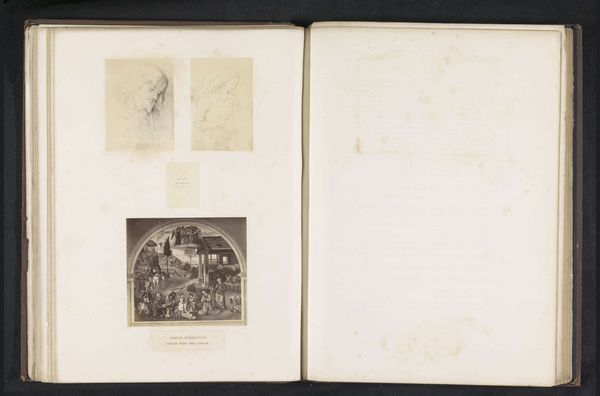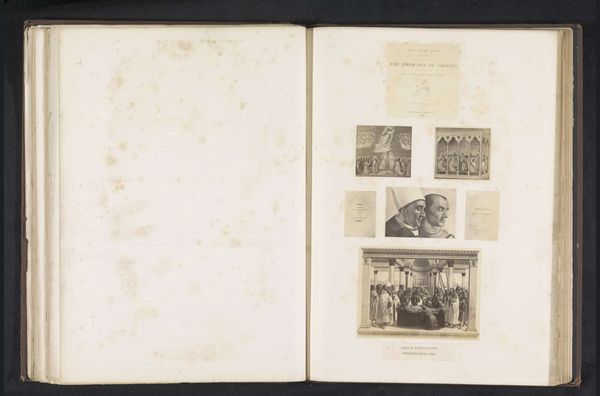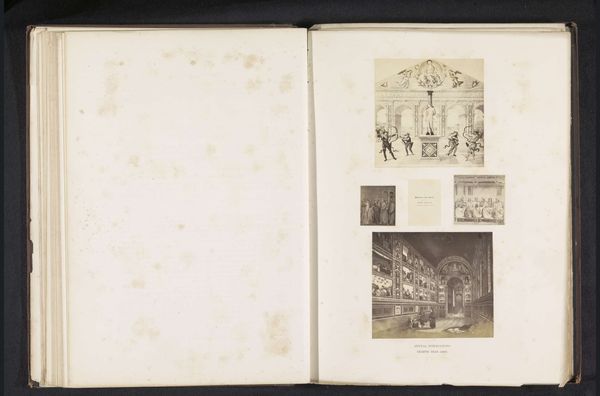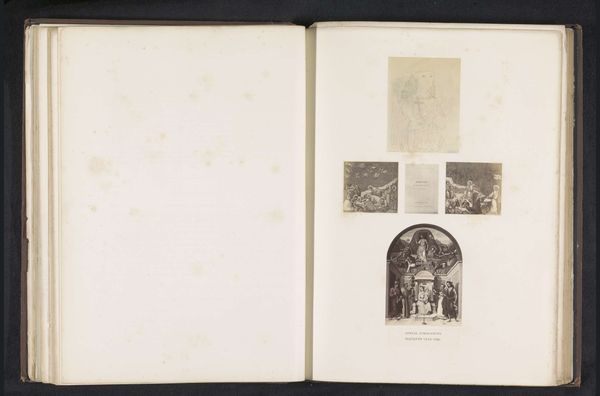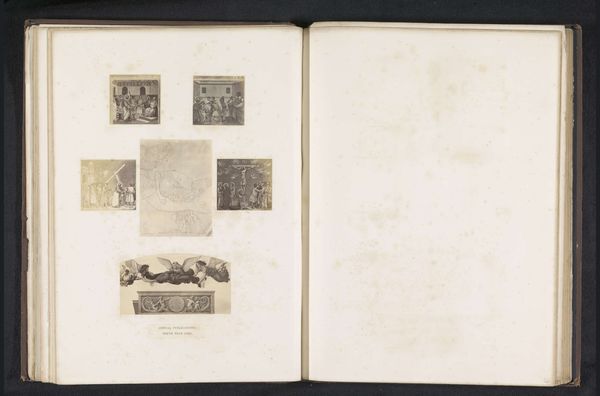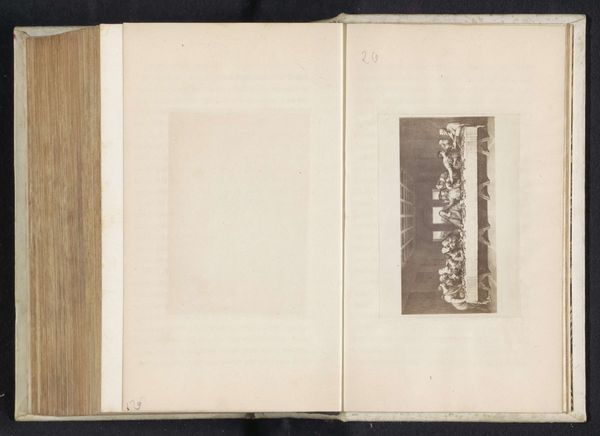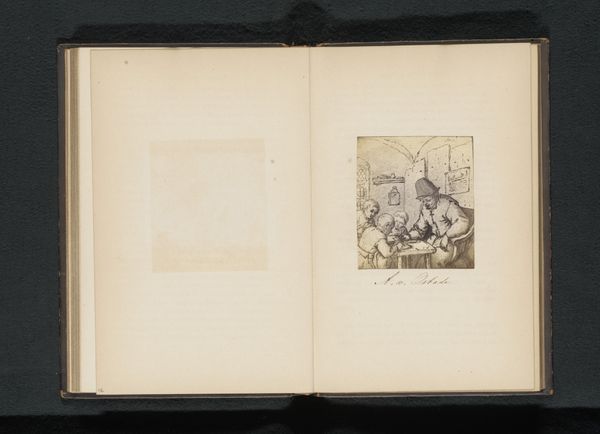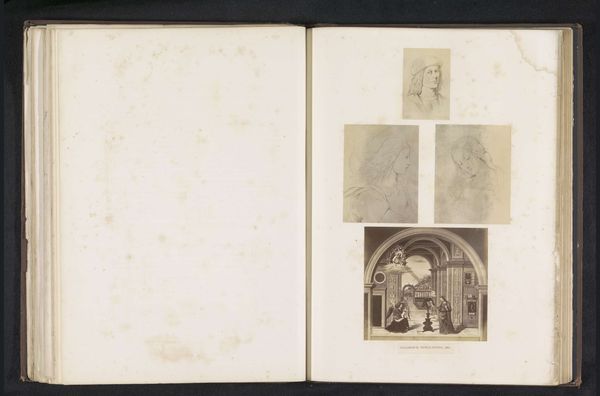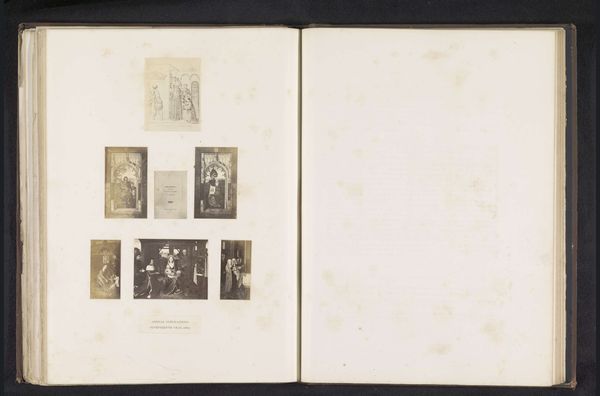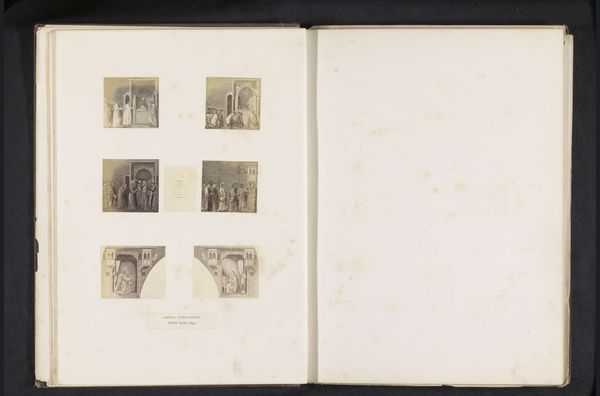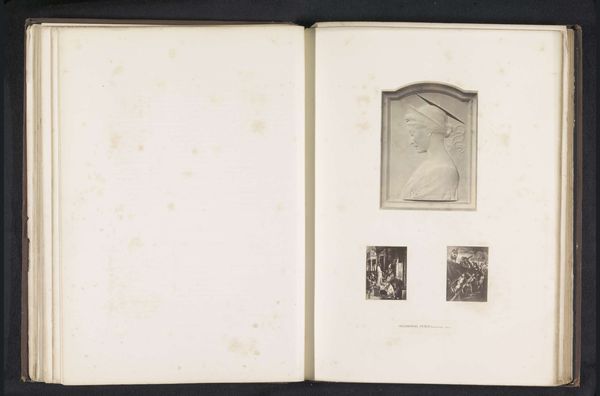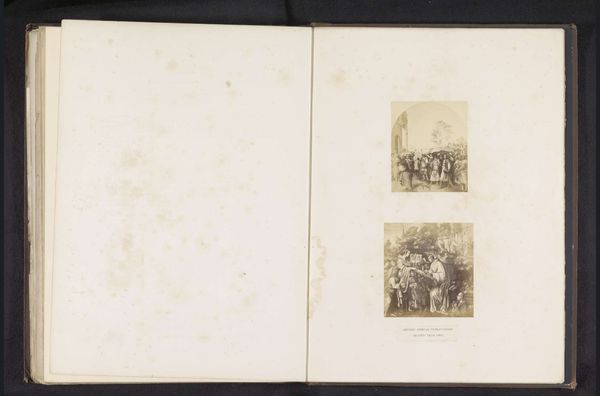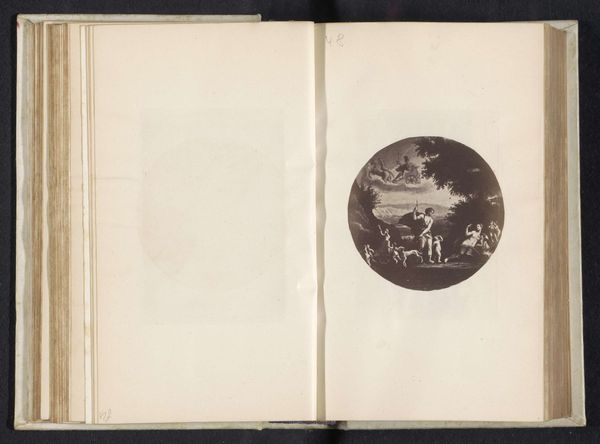
Drie fotoreproducties van een publicatie door de Arundel Society met afbeeldingen door Pinturicchio before 1869
0:00
0:00
mixed-media, tempera, lithograph, print, etching, photography, engraving, albumen-print
#
mixed-media
#
tempera
#
lithograph
# print
#
etching
#
book
#
photography
#
coloured pencil
#
history-painting
#
italian-renaissance
#
engraving
#
albumen-print
Dimensions: height 378 mm, width 290 mm
Copyright: Rijks Museum: Open Domain
Curator: Here we have "Drie fotoreproducties van een publicatie door de Arundel Society met afbeeldingen door Pinturicchio," created before 1869 by an anonymous artist. The work is a fascinating combination of mediums: we see mixed media, tempera, lithograph, print, etching, photography and engraving. Editor: It's strange—the muted tones and layered printing processes lend a ghostly air. What stands out immediately is how reproductive technologies are used here to access Renaissance masterpieces. Curator: Precisely! The Arundel Society played a key role in disseminating Italian Renaissance art. Reproductions like these acted as vital cultural carriers, allowing broader audiences to engage with otherwise inaccessible imagery, thus cementing Pinturicchio's legacy. We see how visual symbols from Renaissance frescos spread. Editor: The question then becomes: who had access to these prints and publications? Was this democratization of art, through mass production, available to the working classes, or primarily enjoyed by the educated, affluent bourgeoisie? Curator: A crucial consideration! Though aiming for accessibility, the societal impact of their reproductions undoubtedly had class dimensions. What does the architecture tell us? Its visual connection to grand buildings such as St Peter's might well point to assertions of status, luxury and divine favor. Editor: I'm most struck by the traces of human labor within this composite work. From Pinturicchio's original tempera to the various printing techniques deployed by anonymous hands, there is so much work. Each transfer imprints a distinct mark of labor. Curator: I agree, and I'm so intrigued by the symbolism retained even through reproduction: color and perspective carefully mimic Pinturicchio’s frescoed vision and all that is preserved. The history painting narrative echoes ideas about civic virtues that these symbols tried to promote. Editor: It raises questions of authenticity, doesn't it? What gets lost, or perhaps transformed, through the mechanical reproduction of art? In any case, it presents so much social material here, which opens further perspectives on cultural preservation and consumerism through visual technologies. Curator: It’s fascinating to see how layers of historical techniques coalesce. It shows an extended lifeline of symbols as cultural value translated across media. Editor: Yes, a very engaging reflection on artistic labour and material transformation in accessing and distributing culturally valuable art.
Comments
No comments
Be the first to comment and join the conversation on the ultimate creative platform.
